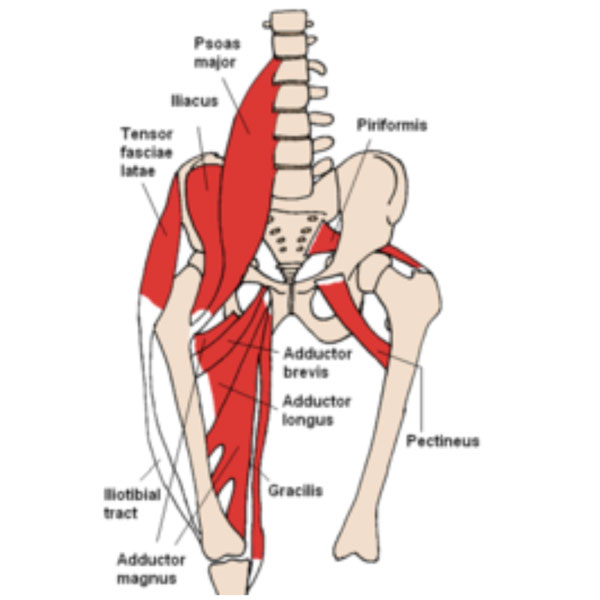
Groin Strains
By Angus Galbraith
31/05/2021
Know the specific muscles to rehabilitate
If you ask any athlete in the sporting population whether they have had niggling groin pain, most of them would tell you it can be a nightmare! This is not surprising as it is quite a common injury, particularly in activities which require multidirectional running/turning such as soccer. A high rate of these injuries are ignored, thus becoming chronic and difficult to treat due to symptoms popping up elsewhere.
Anatomy
The groin strain is an injury to the muscle group which adduct the femur into the midline of the body. The adductor longus muscle is most commonly injured and is quite frequent in soccer. This is because it is required to produce a strong eccentric contraction of these muscles when in lengthened positions such as side stepping, changing direction quickly in response to a change in direction of the ball or simply when running at a fast pace. The strain is usually at the insertion of the muscle to the pelvis.
The adductors include the adductor longus, magnus, brevis, gracilis and pectineus. All of these muscles attach to the pubic rami and act to adduct (bring to the midline of the body) and internally rotate the femur.

Cause
The adductor longus is the most commonly injured. It is thought to be contributed by the large forces which are transmitted during multidirectional activities over the pubic symphysis due to it being a fulcrum for the abdominal and adductor muscles. It can become chronic eg tendinopathy if left untreated or returning to sport too soon.
Presentation
• Tenderness along the muscle belly or muscle tendon junction of the adductor muscles in the groin area.
• Usually nil loss of ROM or strength unless high grade.
• Swelling can be seen after a few days of the injury of a significant tear.
• Chronic cases present with uncharacteristic symptoms. Pain can radiate out to the thigh. Pain during exercise, stiffness and as well as rest.
Treatment
Common misconceptions of acute injuries such as the groin strain is there needs to be a period of rest to allow the muscle/tendon to heal. Research shows that early load and exercise has a more beneficial effect to gain improvements in range of movement and strength to allow the muscle to heal.
An 8 week active strengthening program consisting of adduction exercises, balance training, abdominal strength can be effective for chronic groin strains. However mild (niggling) groin strains can be treated much more effectively in a shorter time frame if treated earlier on in the acute stage of the injury. The take home message here is to have it looked at first before returning to sport to prevent further injury.
As always it is important to have any groin pain assessed by a health professional in order to understand firstly the structures that may be affected, and then determining the best course of treatment for you.
 Instagram
Instagram Social | News
Social | News




